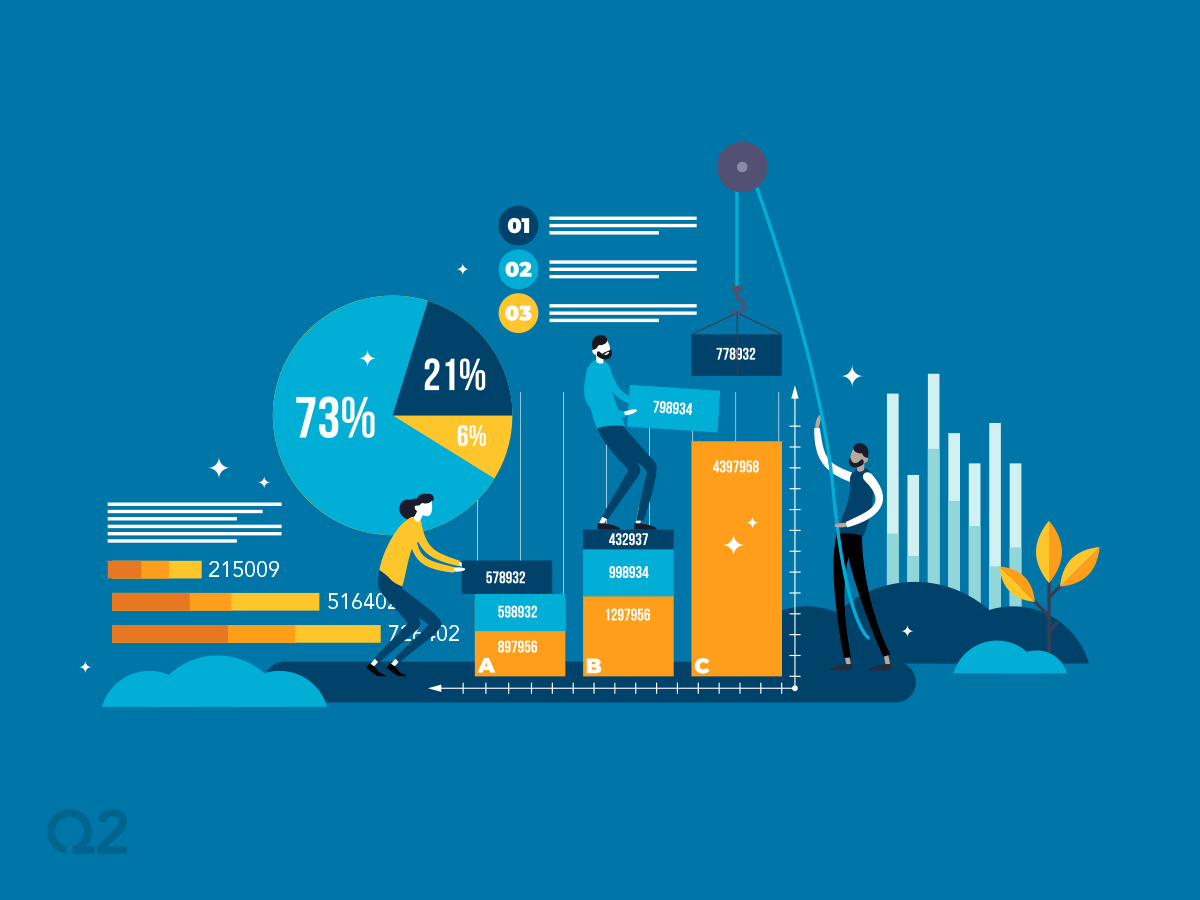By Chris Boas, Managing Director, Q2 Sydney Office
The unforeseen events of 2020 have pushed banks to take a more in-depth look at their digital transformation efforts, and fast. Because of new technology developments, increased customer demand, and now the growing need to support remote workers, if banks want to remain competitive, they must implement ‘digital-first’ responses.
Nowhere is this needed more than in commercial lending – a considerable slice of the market that’s growing as banks funnel government assistance to businesses shuttered by COVID-19.
Digitising commercial lending isn’t just about applying technology to application and approval processes. This change definitely improves speed - and that makes customers happy. But true value lies in leveraging digital methods to enhance the bank’s relationship with the customer.
That means going well beyond just reducing ‘time to serve,’ and focusing on re-imagining the customer experience and empowering relationship managers. This far-reaching shift involves more than applying technology at the back end of the process; it calls for a comprehensive adjustment where data is put to use across the lending lifecycle, from initial inquiry to portfolio management long after the loan has been made.
Where to begin?
Innovative financial institutions (FIs) are starting to use data for commercial lending in three ways:
- Descriptive analytics (using historical data to make observations)
- Predictive analytics (using current and historical data to predict what might happen in the future)
- Prescriptive analytics (using structured and unstructured historical and current data to inform action)
Here are some of the ways we think the use of data might look over the course of the lending lifecycle:
Customer outreach
At the outset of the lending lifecycle, FIs can use tools that capture customer and market data to help them engage more effectively with prospective borrowers. Using descriptive analytics, they can look at historical portfolio data, from end-to-end and see what is happening in their commercial customers’ lives. With predictive technologies, FIs can take that data (such as customer spending patterns) and identify likely scenarios in which a cash injection might be required. They can also leverage historical external market data to predict scenarios – i.e. when customer segments typically experience financial difficulty or need money to fuel growth. Using prescriptive analytics, FIs can deliver highly personalised experiences – setting them apart from their competition.
Deal pricing, credit review and decisioning
As the loan moves into the next part of the lending value chain, valuable data can shine a light on important factors that shape the loan. FIs can use the 360-degree view of their customer generated by their descriptive tools to inform their credit officers. And when they’re pricing a loan and structuring the deal, they can also use prescriptively analytical methods to price multiple deal scenarios and share information with the customer on a variety of terms, such as amortisation, margins, and collateral with the customer - rather than just offering the customer a rate. Relationship managers are empowered to have a much more meaningful conversation – one that produces an optimal deal for the customer while also meeting the bank’s profitability targets and its credit and risk standards.
Documentation and closing
Manual, non-core processes eat up a considerable amount of valuable resources during the final stages of the loan lifecycle. The time it takes staff to generate documents and the time it takes account holders to return them are just two examples of roadblocks that can delay the loan process. Digital, automated, intelligent technologies can be leveraged to reduce the amount of time it takes to complete the loan process, benefitting account holders and FIs alike.
For example, FIs can benefit from cognitively enabled procedures, which inform the decisioning process with efficiency and accuracy following parameters set by the FI. Know-your-customer checks (or KYC checks) verify borrowers' identities digitally. Document automation automatically generates the crucial documents needed to complete the loan process, and recognition technologies provide a digital means for completing signatures and verification without the need for an in-person branch visit. These automated actions help create a more efficient and seamless process for the FI and its customers.
Descriptive analytics that provide an end-to-end view of the customer can show the FI the gaps in the due diligence information they require. And digital scrapes with automated alerts can tell them if they need to, for example, check whether a business premises is real, whether invoices provided as proof of business are accurate, or whether the business description contains enough detail.
Loan servicing and portfolio management
At this stage, FIs can make use of a wide range of structured and unstructured data to help them manage the commercial loans they book. Technologies like straight-through-processing, with its multiple API interface functionality, can deliver automated funds flow. FIs can constantly monitor covenants alongside the external market environment, and with a mix of predictive and prescriptive analytics, identify likely pinch points for the customers, and coach the relationship manager with information on the ‘next best conversation’ to have with the customer.
By applying sophisticated technologies across the lending lifecycle, banks can leverage the vast amount of information their customers generate as part of their commercial activities and use it to engage with them in a more detailed, supportive way. But implementing these technologies requires a flexible mindset and a healthy amount of silo-busting. The COVID-19 pandemic has shown banks that they can move quickly and shake up internal processes without dire consequences. If they bring that mindset to everyday commercial lending, then front-foot banking, and personalised customer service will move from being a nice-to-have to a must-have. It’s time to make data the heart of commercial banking operations.
Please get in touch to find out how Q2 lending can help you navigate the new data-led commercial lending landscape.




